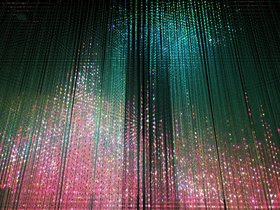Red light for light: Scientists at the Hamburg University of Technology stop light pulses for more efficient data transfer
09.09.2020

Light is fast and can travel 300 kilometers in a millisecond. Therefore, light is ideal as a data carrier for information in telecommunications. Scientists from Hamburg University of Technology (TU Hamburg), Menoufia University, Helmholtz-Zentrum Geesthacht and ITMO-University St. Petersburg, proposed an optical effect that will allow optical communication with less power consumption and in a shorter time. The research results show that stopping light and thus purely optical storage of data packets is possible.
Fiber optics is connecting cities, houses, and computers. To distribute data packets between different fibers, routers are required. They currently convert optical signals into electronic signals, transfer data packets between channels and covert electronic signals back into light. That costs time and energy. Several optical elements are required to achieve faster routing without electronic conversion. One of them is optical storage.
“By stopping the light, data packets can be saved for some time and then released again. However, this is a complicated phenomenon and has so far been considered difficult to demonstrate experimentally,” says Dr. Alexander Petrov from the Institute for Optical and Electronic Materials at Hamburg University of Technology. “We have now shown for the first time how a light signal can reflect off a moving disturbance and stop in a waveguide. Similar to a mechanical collision, the signal hits a co-propagating obstacle and bounces from it. If the velocities are correctly adjusted the light pulse can stop after the collision,” explains the TU Hamburg scientist.
The proposed solution can be implemented in simple optical waveguides without complicated geometry and complex switching scheme. The research team plans the experimental realization of the proposed concept.
Further information:
https://aip.scitation.org/doi/10.1063/5.0007986
https://doi.org/10.1063/10.0001801
TUHH - Public Relations Office







